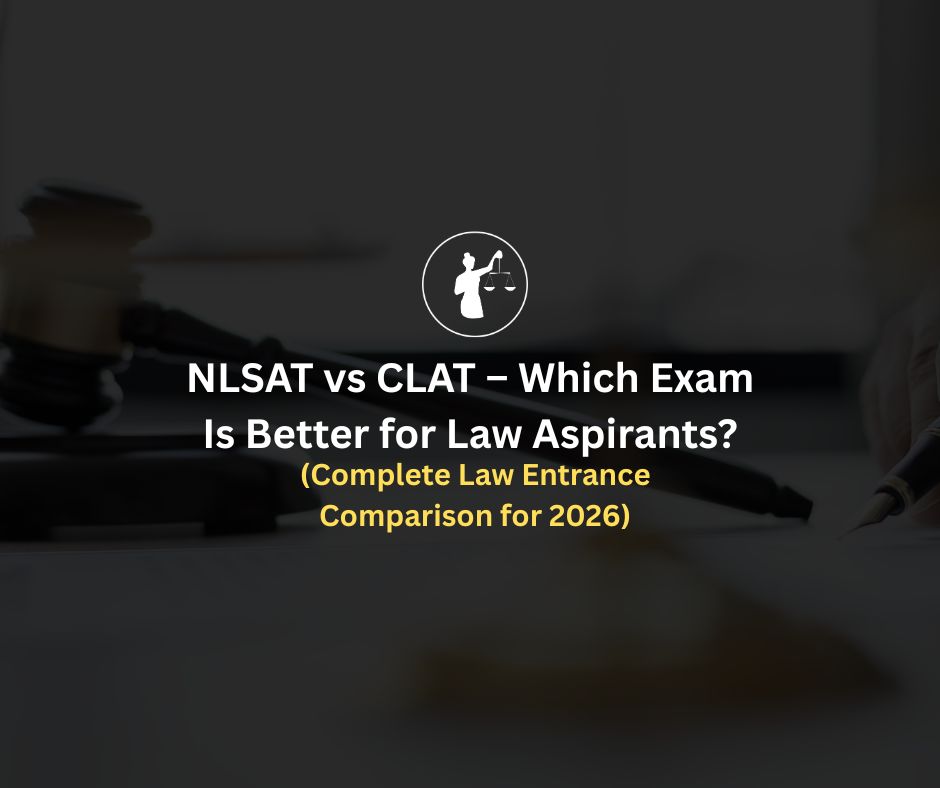
If you're aiming to pursue a career in law, the 3-Year LL.B. program at the University of Delhi is one of the most respected options in India. Admission to this program is now conducted exclusively through the CUET PG (Common University Entrance Test - Postgraduate), administered by the National Testing Agency (NTA).
This guide will walk you through the entire application process for CUET PG DU LLB 2026, including eligibility, syllabus, application code (COQP11), and how to register step-by-step.
Also Read: CUET PG LLB 2026 Syllabus
CUET PG DU LLB 2026 is a national-level entrance exam that offers admission into the 3-Year Bachelor of Laws (LL.B.) program at the Faculty of Law, University of Delhi. Unlike undergraduate integrated law programs like CLAT or LSAT-India, this exam is specifically for graduates from any stream—arts, commerce, science, or engineering—making it a highly inclusive pathway into legal education.
Important: In the CUET PG application, there is no separate code labeled DU LL.B.. Applicants must select the General Test Paper – COQP11, which is the designated paper code for DU's LL.B. program.
The Faculty of Law at the University of Delhi has a legacy of excellence in legal education. It has produced eminent judges, bureaucrats, senior advocates, and legal scholars over decades. Here are key reasons why DU continues to be a top choice:
Academic Excellence: Highly qualified faculty with decades of teaching and research experience.
Affordable Tuition: DU offers quality education at a fraction of the cost compared to private law schools.
Strategic Location: Centrally located in Delhi with proximity to the Supreme Court, High Court, and numerous tribunals.
Professional Exposure: Frequent internships, moot court competitions, and access to legal aid societies.
Strong Alumni Network: DU law graduates occupy prestigious positions across the legal profession and civil services.
Also Read: CUET-PG DU LLB 2026: Step-by-Step Registration Process
Before beginning the application process, confirm that you meet the eligibility requirements:
Educational Qualification
A Bachelor's degree in any discipline (B.A., B.Com., B.Sc., B.Tech, etc.) from a recognized university.
Minimum Marks Required
General / OBC / EWS: At least 50% aggregate marks
SC / ST / PwD: At least 45% aggregate marks
Final-Year Candidates
Students appearing in the final year of their undergraduate course are eligible to apply. Admission will be provisional and confirmed upon securing the minimum qualifying marks before the academic session begins.
Here is a detailed breakdown of how to register for CUET PG DU LLB 2026:
Step 1: Visit the Official Website
Go to https://pgcuet.samarth.ac.in — this is the official portal for CUET PG 2026 registration.
Step 2: Register as a New User
Click on “New Registration” and fill in details such as:
Full Name
Date of Birth
Email ID and Mobile Number
Security PIN and Password
After verifying via OTP, your account will be created.
Step 3: Fill in the Application Form
Log in and enter your personal, academic, and contact information carefully.
Choose your preferred exam city and verify your details.
Step 4: Select the Paper Code – COQP11
Under the “Select Test Paper” section, choose COQP11, which is the only valid paper code for applying to the DU LL.B. program.
Ensure that you select University of Delhi as one of your preferred universities.
Step 5: Upload Required Documents
You must upload scanned copies of the following:
Passport-size Photograph (Recent, colored)
Signature
Category Certificate (if applicable)
PwD Certificate (if applicable)
Bachelor’s Degree Certificate (if already graduated)
Step 6: Pay the Application Fee
The fee can be paid online via UPI, credit card, debit card, or net banking.
Step 7: Submit and Download Confirmation Page
After payment, submit the form and download the confirmation page for your records.
Also Read: CUET PG DU LLB 2026: Exam Overview and Key Information
The exam tests candidates across five skill domains, designed to assess aptitude for legal education.
Total Questions: 75
Total Marks: 300
Negative Marking: -1 for each wrong answer
Understanding previous years' DU LL.B. cut-off data is essential for setting a realistic target score for CUET PG DU LLB 2026. Although the University of Delhi has recently transitioned to the CUET PG format, historical data from earlier entrance tests provides valuable benchmarks.
Expected CUET PG DU LLB 2026 Cut-Off (Out of 300)
Note: These are estimates based on past DU LL.B. entrance trends and may vary depending on the CUET PG 2026 paper difficulty, number of applicants, and seat availability.
Join Our Telegram for Latest Updates
This data helps CUET PG DU LLB 2026 aspirants gauge historical performance trends and competition levels.
General Category
OBC Category
SC Category
ST Category
Several key variables affect the CUET PG DU LLB 2026 cut-off:
If you're targeting CUET PG DU LLB 2026, aim to exceed the upper range of the expected cut-off for your category. Based on historical trends and CUET's scoring model:
A General category aspirant should aim for 260+ marks in COQP11.
For OBC and EWS, a safe score range would be 225–245.
SC/ST candidates should target 190–210 for a competitive edge.
Make sure to check the official DU admission portal post-exam for the actual CUET PG DU LLB 2026 cut-offs, which will be released with the merit lists.
Here is a closer look at the syllabus covered under each section:
1. English Comprehension
Grammar and sentence structure
Vocabulary (synonyms, antonyms, idioms, one-word substitutions)
Sentence correction and improvement
Reading comprehension and paragraph completion
Jumbled paragraphs and usage errors
2. General Knowledge and Awareness
Indian and world history
Indian Constitution and political structure
Legal and trade-related current events
Literature, sports, geography, and culture
Economic affairs, scientific developments, and notable personalities
3. Computer Basics
Operating systems: Windows, MS Office (Word, Excel, PowerPoint)
Internet and web browsers
Computer hardware, software, input/output devices
Network basics, storage devices, common IT terms and shortcuts
4. General Aptitude
Percentages, profit & loss, simple and compound interest
LCM, HCF, simplification, averages
Time, speed, distance; time and work
Ratios, mixtures, allegations
Geometry, mensuration, volume and surface area
Permutations, combinations, and set theory
5. Logical Reasoning
Statements and assumptions, cause-effect relationships
Analytical reasoning, conclusions and inferences
Number and alphabet series, coding-decoding
Blood relations, direction sense, ranking
Symbol-based questions and visual patterns
Preparing for CUET PG DU LLB 2026 requires more than just understanding the syllabus—it demands a strategic, consistent, and well-resourced approach. Since the University of Delhi’s LL.B. program is highly sought-after and the CUET PG is its sole entry route, thorough preparation can make a significant difference in your admission prospects.
1. Understand the Exam's Purpose and Structure
The CUET PG DU LLB exam is not designed to test legal knowledge directly. Instead, it assesses aptitude, general awareness, logical reasoning, and communication skills—qualities essential for success in legal education and practice. This makes it especially accessible for candidates from non-law backgrounds, but also competitive.
2. Develop a Study Timeline
Start your preparation at least 6–9 months in advance. Here’s how to structure your timeline:
Phase 1 (Months 1–3): Build conceptual clarity in General Aptitude, English Comprehension, and Computer Basics.
Phase 2 (Months 4–6): Focus on expanding General Knowledge and honing Logical Reasoning skills.
Phase 3 (Months 7–9): Take full-length mocks, revise high-weight topics, and work on speed and accuracy.
3. Strengthen Reading and Analytical Skills
A significant portion of the exam involves:
Reading Comprehension
Logical Interpretation
Inference-based Questions
Read newspapers like The Hindu Express, legal news portals, and editorials to sharpen your reading comprehension and current affairs knowledge.
4. Practice Topic-Wise and Full-Length Mock Tests
Mock tests not only build familiarity with the computer-based format, but also help:
Identify weak areas early
Improve time management
Boost confidence under exam pressure
Make sure to simulate actual exam conditions when taking these mocks.
5. Track Legal and Current Affairs
Although the exam is general in nature, legal and trade awareness is a listed topic under the syllabus. Focus on:
Landmark Supreme Court and High Court judgments
Major legislation and legal reforms
National and international economic and political developments
Use monthly current affairs digests and legal GK compilations to stay updated.
6. Use Reliable Preparation Resources
Select standard and relevant study material. Recommended sources include:
Quantitative Aptitude: R.S. Aggarwal, Arun Sharma (basic to moderate)
English: Wren & Martin, Word Power Made Easy
Logical Reasoning: MK Pandey or RS Aggarwal
Computer Basics: Lucent’s Computer Knowledge or NCERT basics
GK & Legal Awareness: Lucent’s GK, Manorama Yearbook, and legal updates from trusted websites
7. Don’t Ignore the Technical Application Details
Even if you’re well-prepared academically, a simple error in the application form—like choosing the wrong paper code—can invalidate your candidature. Always select:
Paper Code: COQP11
Retain screenshots and PDFs of your application confirmation page and fee payment receipts.
8. Stay Consistent and Balanced
Avoid burnout by pacing your studies with regular breaks, light exercise, and daily news reviews. A calm and consistent approach is more effective than last-minute cramming.
With clarity, diligence, and smart preparation, clearing CUET PG DU LLB 2026 can pave the way to one of India’s most prestigious legal institutions.
Ready to ace CUET-PG DU LLB 2026? Join CLAT NLTI’s Coaching-cum-Mentorship + Test Series Program for expert guidance, structured preparation, and full-length mocks.





